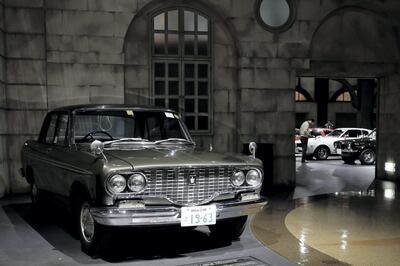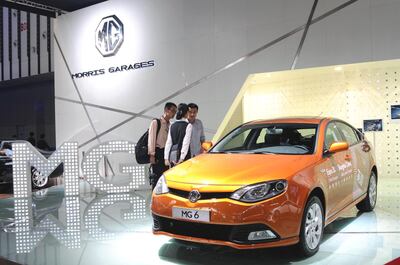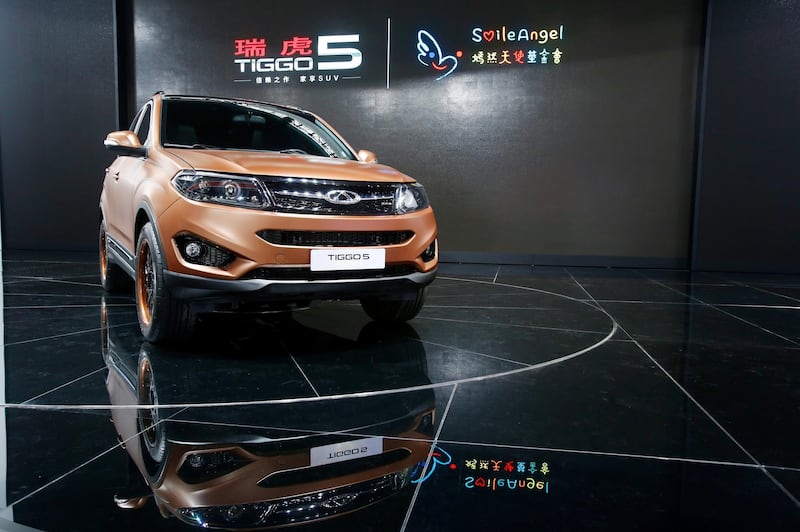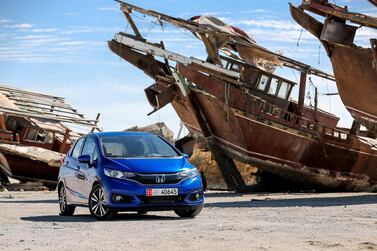Americans laughed in the summer of 1958 when a little Japanese car rolled off the boat and into California. The Toyopet Crown was the first car exported from Japan to the United States, and it would take more than a decade for the jokes to become stale. Toyota, Honda and Nissan (Japan's "Big Three") would flood the market and leave Detroit scrambling to develop compact rivals. A fuel crisis in the 1970s left America's Big Three (General Motors, Ford and Fiat Chrysler) trying futilely to flog gas-guzzling V8s choked by emissions regulations, while the Japanese brands savoured the moment, laughing all the way to the bank in their thrifty four-cylinders.
At first these cars from Asia were taboo and many Americans harboured disdain for imports. Eventually, however, the US public warmed to these odd, small vehicles, as they realised it was nice to step outside on a cold morning and set off in a car that actually started on first try. The heater worked and the rear-view mirror didn't fall off when you slammed the door shut. The Detroit marketing machine met its match.

Nissan famously laid the foundations for an entirely new industry to get going rapidly, by examining the way the British did things. It then launched a car that looked suspiciously like the Austin 7, one of the best-selling cars in Europe before the Second World War.
All the while, South Korea kept an eye on things. Following Nissan's example, Hyundai, Daewoo and SsangYong were at first seen as cheap reproductions of European and American leftovers, but with a dogged determination to sell nothing but pragmatic, sensible cars, Korea's manufacturers left plenty of European and US companies in the dust.
For its first home-grown car, the 1975 Hyundai Pony, the Koreans had to call in the services of a western auto executive, who came over from British Leyland to show them the ropes. Hyundai then went on to become the third largest car manufacturer in the world, and British Leyland eventually collapsed …
If history teaches us anything, it's that it repeats itself, and Chinese manufacturers will figure out how to repeat it in a less expensive way. The country's industry was first noticed internationally after copies started appearing at auto shows in Shanghai and Beijing; people laughed at the Lifan 320, a copy of a Mini Cooper, and the Shuanghuan SCEO, a caricature of a BMW X5. But oh, how things have changed in a decade.
China is now past the early stages of imitating success and is about to follow neighbouring nations into the US market. Companies are recruiting the best designers in the world to shape an authentic automotive image, and the cars coming out of the most populous country in the world look decent. Benoit Jacob and Chris Bangle, both former BMW designers, are among the big-hitters to make the move into an exciting industry.
In the UAE, Chinese cars command only about one per cent of market share. But with eight manufacturers here and increasingly competitive models arriving, that figure could be set to rise rapidly.
MG Motors has just launched the new MG6 saloon, packing a modern turbocharged engine in the face of naturally aspirated competition, and the equipment levels rival Korean models with a 20.3-centimetre touchscreen, keyless entry and push-start, rear-parking camera, dual-zone air-conditioning (with the all-important rear passenger vents), a tyre pressure monitoring system and leather interiors. Chery also upped its game last year by introducing the Tiggo 5 crossover in the UAE, which has a 22.9cm touchscreen, panoramic roof and a 360-degree camera, as well as a five-star safety rating, going by the Chinese NCAP crash regulations, to ease your uncertainty.

JAC is another Chinese player in the lucrative compact crossover segment, and the company’s J3 model starts from Dh40,000. Those of you with bigger budgets have the option of the Haval H2, another Chinese mini-crossover that is priced in the Dh60,000s. Then there’s Changan, Geely and Great Wall to consider, so China is not short of vehicular ambassadors in the region.
In addition, most recently, China resurrected a German brand to call its own, buying the rights to Borgward, a defunct marque that made a name for itself in the 1950s with pretty roadsters and sturdy saloons. These days they peddle SUVs, of course, and the flagship Borgward BX7 TS seemingly takes inspiration from BMW when it comes to cabin design. At a price point well above Dh100,000, the BX7 makes no excuses for Chinese cars – it’s got the likes of the Honda CR-V in its sights.
As the world's single biggest car market, with nearly 24 million sales in 2018, China has things covered at home already. Indeed, foreign manufacturers must find local partners in order to do business, which gives China a fast-pass to technology access. The country also leads the way in electric vehicle development. It's the world's biggest EV market, with more than 800,000 charging points to cater to more than 2.5 million zero-emissions cars on its roads.
More than 60 years since Japan led the way for Asia in the US with that little Toyota docking in California, Chinese manufacturers are following suit and preparing to enter the American market. Last month at the Detroit Motor Show, in the Big Three's backyard, Chinese manufacturer GAC Motor unveiled an all-electric concept car, stirring things up before the company starts selling cars in America next year.
Byton, BYD and NIO make up yet more Chinese brands featuring in headlines these days, the latter setting the lap record for the fastest time around the Nurburgring Nordschleife – a hallowed automotive proving ground in Germany – for an all-electric vehicle, beating manufacturers such as Ferrari, Lamborghini, Porsche and Chevrolet. Now try and find the punchline in that one.







